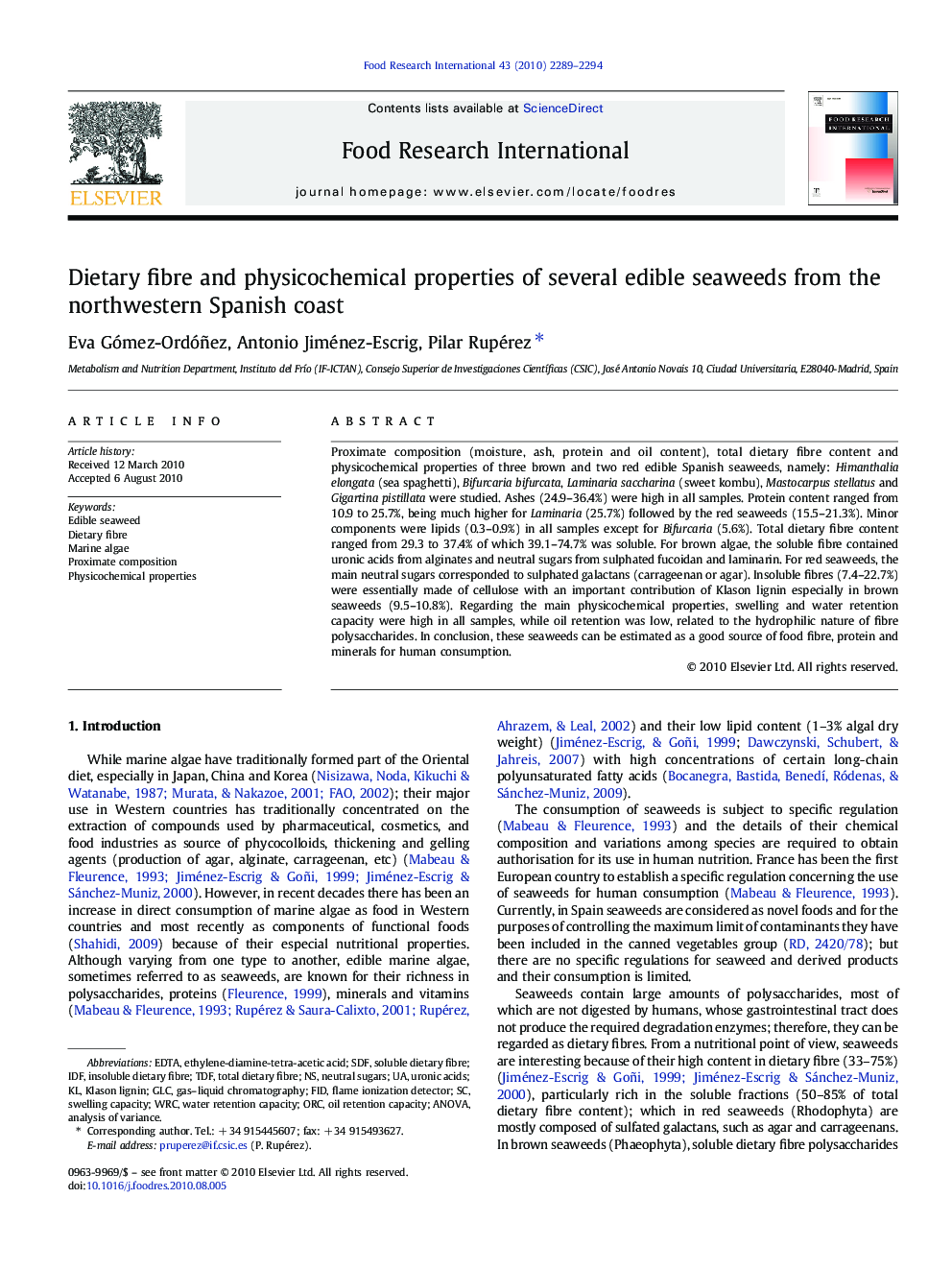| Article ID | Journal | Published Year | Pages | File Type |
|---|---|---|---|---|
| 4562351 | Food Research International | 2010 | 6 Pages |
Proximate composition (moisture, ash, protein and oil content), total dietary fibre content and physicochemical properties of three brown and two red edible Spanish seaweeds, namely: Himanthalia elongata (sea spaghetti), Bifurcaria bifurcata, Laminaria saccharina (sweet kombu), Mastocarpus stellatus and Gigartina pistillata were studied. Ashes (24.9–36.4%) were high in all samples. Protein content ranged from 10.9 to 25.7%, being much higher for Laminaria (25.7%) followed by the red seaweeds (15.5–21.3%). Minor components were lipids (0.3–0.9%) in all samples except for Bifurcaria (5.6%). Total dietary fibre content ranged from 29.3 to 37.4% of which 39.1–74.7% was soluble. For brown algae, the soluble fibre contained uronic acids from alginates and neutral sugars from sulphated fucoidan and laminarin. For red seaweeds, the main neutral sugars corresponded to sulphated galactans (carrageenan or agar). Insoluble fibres (7.4–22.7%) were essentially made of cellulose with an important contribution of Klason lignin especially in brown seaweeds (9.5–10.8%). Regarding the main physicochemical properties, swelling and water retention capacity were high in all samples, while oil retention was low, related to the hydrophilic nature of fibre polysaccharides. In conclusion, these seaweeds can be estimated as a good source of food fibre, protein and minerals for human consumption.
